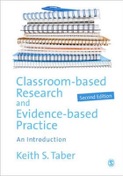Educational Research Methods

A site to support teaching and learning...

The repertory grid technique
George Kelly (1963) originally developed Personal Construct Theory (PCT) for use in counselling, but his (constructivist) ideas and elicitation techniques have been found to of much wider value.
Research tools
Kelly’s theory developed from his work as a psychologist/counsellor. He devised research techniques to explore his client’s ‘construct systems’ of their worlds:
-
•The construct repertory test (a.k.a. ‘Kelly’s triads’) - to elicit constructs
-
•Repertory grid - to see how constructs were related
The repertory grid method
The repertory grid technique goes beyond the construct repertory test, by asking the informant to make discrimination on each of personal constructs elicited, for each element:
on which pole construct does each element best fit?

“1. They are concerned with eliciting from a person the relationships between sets of constructs …
2. The primary aim is to reveal the construct patterning for a person and not to relate this patterning to some established normative data …
3. There is no fixed form or content …
-
4.All forms are designed so that statistical tests of significance can be applied to the set of comparisons each individual has made …” (Bannister & Fransella, 1986, pp.51-2.)
(Bannister & Fransella, 1986, p.44.)Bannister, D., & Fransella, F. (1986). Inquiring Man: The Psychology of Personal Constructs (3rd ed.). London: Routledge.
So this method uses quantitive methods which imply an objectivist or positivist stance (it is assumed there is a relative stable system of constructs (an ontological assumption), and that it can be determined by the technique (an epistemological assumption i.e., that the method produces a model that represents the underlying structure to a useful extent), yet an idiographic one.
“…the ratings are applied to a statistical calculation called cluster analysis to create a focus grid. These calculations ensure that concepts with similar scores are grouped together in the focus grid. Similarly, attributes that have similar scores across the concepts are grouped together in the focus grid.” (http://www.epistemics.co.uk/Notes/184-0-0.htm)
This is a personal site of Keith S. Taber to support teaching of educational research methods.
(Dr Keith Taber is Professor of Science Education at the University of Cambridge.)
2016-2018
